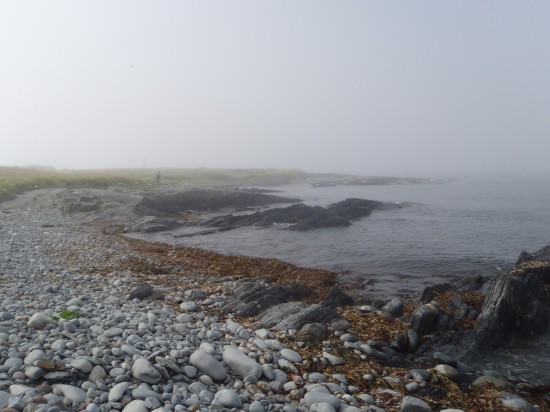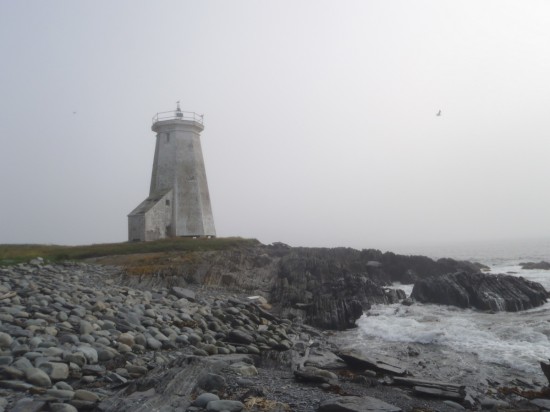The eerie dirge of fog horns and optical illusions make George Burden’s visit to a small island off the coast of Nova Scotia much more than your typical picnic site.
Everyone has heard of Devil’s Island, the French penal colony off South America where hardened criminals passed their lives away from better behaved French citizens. Many fewer are familiar with Nova Scotia’s own Devils Island, the outermost of the islands of Halifax Harbour near the fishing community of Eastern Passage. It received its ominous name from its first settler, a French merchant variously identified as Devol, Deval or Deville (like in Cruella Deville of “101 Dalmatians” fame).

This became anglicized to Devil, and perhaps not inappropriately so, given some of the ghostly legends attached to the 25 acre island. Once home to a thriving community of fisher folk, with 18 houses dotting the island by 1901, it is now deserted. The last residents, a pair of Norwegian artists, having left hurriedly under mysterious circumstances in 2000. Since the last house collapsed, the island now boasts only ruined buildings and a 19th century lighthouse, built in 1877, that slowly moulders away since the installation of automated light-tower. Nothing remains of the first lighthouse, built in 1852, but the stone foundation, a stones throw (literally) from the new light tower.
Most of the island’s residents were moved to the mainland at the outbreak of World War II. Many of the island’s occupants belonged to the Henneberry family, and an old salt by the name of Ben Henneberry proved to be an invaluable source of information to famed Nova Scotia folk-lorist, Dr. Helen Creighton.

Devils Island is now mostly owned by noted Nova Scotia entrepreneur, Bill Mont. Its current occupants number thousands of seagulls, mainly Great Black Backed and Herring gulls. They nest in droves and thrive thanks to the absence of predators and the infrequent visits of man. (Our captain, Mike Tilley, told me this August 1, 2011 landing was the first he’d been able to make since the previous October).
Geologically the island seems a curious amalgamation of bedrock, sedimentary rock with some fossils in evidence and glacial till dropped at the end of the Ice Age. Vegetation consists of an amalgam of typical sea-side plant life and grasses, with here and there lilies, foxglove, white and red roses planted by former residents and now gone wild.
Landing on the island we began to circumnavigate to the southern end where the 1877 lighthouse still stands proudly erect, like an elderly dowager long past her prime. One day she too will totter and fall in one of the wild Atlantic Nor’easters and will become nothing but flotsam washed up on a foreign shore.
As we navigate around the island the fog begins to drift in, and the eerie dirge of the fog horns in the harbour begins to sound. In the distance, masked by the fog, I seem to see shapes flitting around deserted foundations and near the old lighthouse. Of course sunlight and fog can produce weird optical illusions.
Approaching the 1877 lighthouse, I stick my head in a hole punched into the sturdy wooden infrastructure, perhaps by nature, or perhaps vandals. It’s deathly quiet and I listen carefully until I hear an unusual foot-step like creaking sound coming from above. Naw, just the wind I think to myself. Then I withdraw my head from the opening with a shiver and hurry on my way.
Would be visitor to Devils Island should contact Mike Tilley at: (902) 465-4563.
Photo Credits
All photos courtesy of George Burden



Please Share Your Thoughts - Leave A Comment!